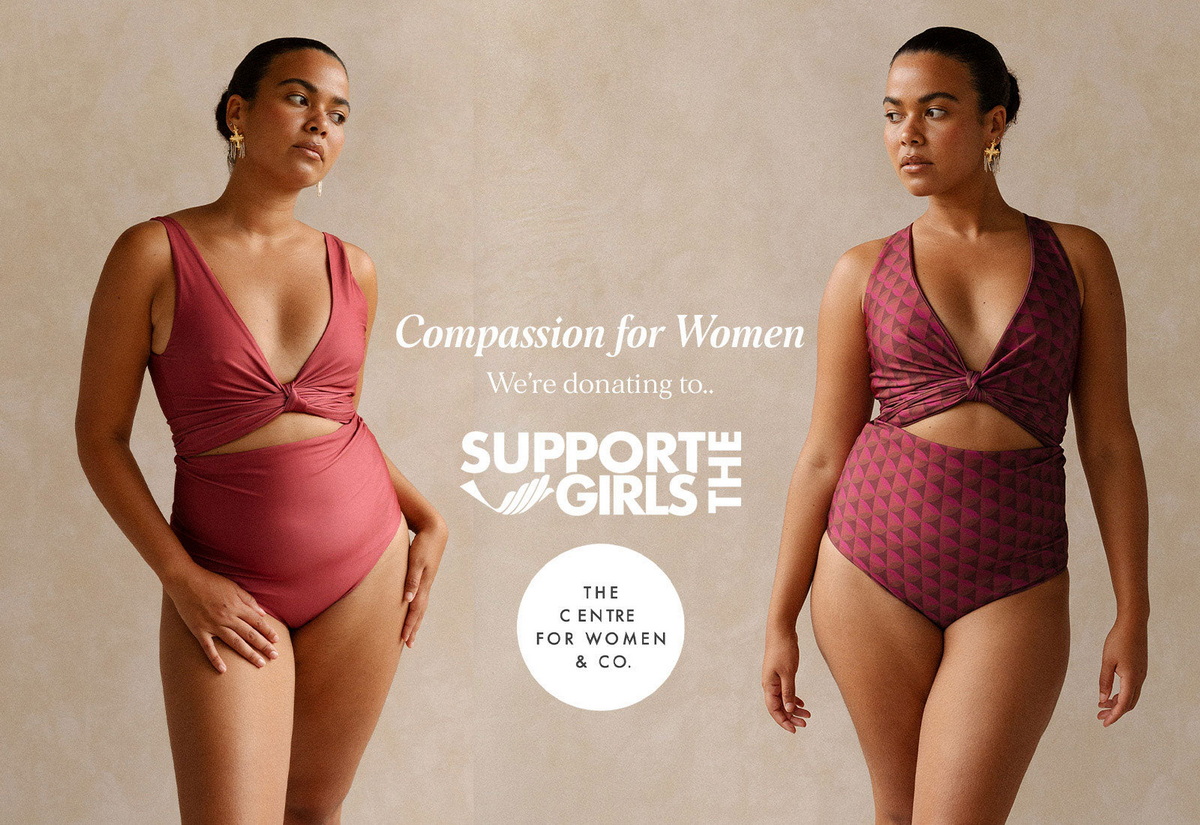Content Menu
● Understanding Charity Shops
● The Swimwear Dilemma
● Factors Influencing Swimwear Acceptance
● Researching Local Charity Shops
● Preparing Swimwear for Donation
● Alternative Options for Swimwear Donation
● The Impact of Swimwear Donations
● Environmental Considerations
● Educating the Community
● The Role of Manufacturers
● The Future of Swimwear Donations
● Conclusion
● Video Content
● Frequently Asked Questions
>> 1. Q: Are all charity shops the same when it comes to accepting swimwear?
>> 2. Q: How should I prepare swimwear for donation?
>> 3. Q: What can I do if my local charity shops don't accept swimwear?
>> 4. Q: Is it environmentally friendly to donate swimwear?
>> 5. Q: Are there any hygiene concerns with donating swimwear?
As the summer season approaches, many of us find ourselves rummaging through our wardrobes, contemplating what to do with last year's swimwear. Perhaps you've outgrown your favorite bikini, or maybe you're simply looking to refresh your beach attire. Whatever the reason, the question often arises: do charity shops take swimwear? This article delves into the world of charitable donations, focusing specifically on the acceptance and handling of swimwear in charity shops.

Understanding Charity Shops
Charity shops, also known as thrift stores or op shops in some parts of the world, play a crucial role in our communities. These establishments sell donated goods to raise funds for various charitable causes. From clothing and books to household items and accessories, charity shops offer a wide range of pre-loved items at affordable prices. Not only do they provide a sustainable shopping alternative, but they also contribute to reducing waste and supporting those in need.

The Swimwear Dilemma
When it comes to swimwear, the situation becomes a bit more complex. Unlike regular clothing items, swimwear poses unique challenges for charity shops. The intimate nature of swimsuits, coupled with hygiene concerns, makes some charity shops hesitant to accept these items. However, the policies regarding swimwear donations can vary significantly from one organization to another.
Factors Influencing Swimwear Acceptance
Several factors come into play when charity shops decide whether or not to accept swimwear donations:
1. Hygiene Concerns: Swimwear is worn close to the body and often in water, raising potential hygiene issues. Some charity shops may be concerned about the cleanliness of donated swimsuits.
2. Condition of the Item: The overall condition of the swimwear is crucial. Charity shops are more likely to accept swimsuits that are in good condition, without signs of excessive wear, tears, or fading.
3. Current Demand: The demand for swimwear can vary depending on the location and season. Shops in coastal areas or during summer months might be more inclined to accept swimwear donations.
4. Storage and Display: Some charity shops may have limited space or resources to properly store and display swimwear items.
5. Organizational Policies: Each charity organization has its own set of guidelines and policies regarding acceptable donations. These policies can differ based on the charity's mission, resources, and target beneficiaries.

Researching Local Charity Shops
Given the variability in policies, it's essential to research and contact your local charity shops before donating swimwear. Many organizations provide information about acceptable donations on their websites or through their customer service channels. Don't hesitate to call or visit your nearby charity shops to inquire about their specific policies on swimwear donations.
Preparing Swimwear for Donation
If you find a charity shop that accepts swimwear, it's crucial to prepare your items properly before donation. Here are some steps to ensure your swimwear donations are welcome and useful:
1. Clean Thoroughly: Wash the swimwear according to the care instructions. Ensure it's completely dry before donating.
2. Check for Damage: Inspect the swimsuit for any tears, loose threads, or missing pieces. Minor repairs can make a big difference.
3. Remove Personal Items: Double-check pockets and linings for any personal items you might have forgotten.
4. Group Similar Items: If you're donating multiple pieces, consider grouping similar items together, such as bikini tops and bottoms.
5. Package Neatly: Fold the swimwear neatly and place it in a clean bag or box for donation.

Alternative Options for Swimwear Donation
If your local charity shops don't accept swimwear, don't despair. There are alternative ways to give your pre-loved swimsuits a new life:
1. Specialized Charities: Some organizations specifically collect swimwear for underprivileged communities or disaster relief efforts.
2. Women's Shelters: Many women's shelters accept donations of gently used clothing, including swimwear, for their residents.
3. Schools and Community Centers: Local schools or community centers with swimming programs might welcome swimwear donations for students in need.
4. Textile Recycling Programs: If the swimwear is not in donatable condition, look for textile recycling programs in your area that can repurpose the materials.
5. Upcycling Projects: Consider repurposing the swimwear yourself into other useful items, such as cleaning rags or craft projects.
The Impact of Swimwear Donations
When accepted and properly handled, swimwear donations can have a significant positive impact. For many individuals and families, purchasing new swimwear can be a financial burden. By donating your gently used swimsuits, you're providing someone else with the opportunity to enjoy water activities and feel confident at the beach or pool.

Environmental Considerations
Donating swimwear also contributes to environmental sustainability. The fashion industry, including swimwear production, has a significant environmental footprint. By extending the life cycle of swimwear through donation, we can help reduce waste and the demand for new production, thereby lessening the environmental impact.
Educating the Community
As more people become aware of the possibilities and challenges surrounding swimwear donations, community education becomes crucial. Charity shops and donors alike can play a role in spreading awareness about proper donation practices and the importance of giving pre-loved items a second chance.
The Role of Manufacturers
Some swimwear manufacturers are taking steps to address the end-of-life cycle of their products. Initiatives such as take-back programs or partnerships with recycling organizations are becoming more common. As a consumer, you can support brands that demonstrate responsibility for the entire lifecycle of their products.

The Future of Swimwear Donations
As sustainability becomes an increasingly important consideration in the fashion industry, we may see changes in how charity shops and other organizations handle swimwear donations. Innovations in fabric technology and cleaning processes could make it easier for charity shops to accept and resell swimwear safely.
Conclusion
While the answer to "Do charity shops take swimwear?" isn't a simple yes or no, it's clear that with some effort and research, there are often ways to give your pre-loved swimsuits a new purpose. Whether through direct donation to charity shops, alternative donation channels, or recycling programs, your old swimwear can continue to make a splash in someone else's life.
By being mindful of donation guidelines, preparing items properly, and exploring various options, we can all contribute to a more sustainable and compassionate approach to fashion consumption. Remember, every small action counts in creating a more circular economy and supporting those in need within our communities.
So, the next time you're ready to refresh your swimwear collection, consider the potential journey your old swimsuits could take. With a little effort, your beach memories could become someone else's new beginning, all while supporting charitable causes and environmental sustainability.
Video Content
1. [Can You Donate Bathing Suits To Goodwill? - CountyOffice.org]
This video discusses the possibility of donating bathing suits to Goodwill, providing insights into the donation process and considerations.
2. [Can You Donate Swimsuits To Goodwill? - CountyOffice.org]
Another informative video that explores the topic of donating swimsuits to Goodwill, offering guidance and information for potential donors.
Frequently Asked Questions
1. Q: Are all charity shops the same when it comes to accepting swimwear?
A: No, policies vary between different charity shops and organizations. It's best to check with your local shops directly about their specific guidelines for swimwear donations.
2. Q: How should I prepare swimwear for donation?
A: Clean the swimwear thoroughly, ensure it's completely dry, check for any damage, remove personal items, and package it neatly in a clean bag or box.
3. Q: What can I do if my local charity shops don't accept swimwear?
A: Consider alternative donation options such as specialized charities, women's shelters, schools with swimming programs, or textile recycling centers.
4. Q: Is it environmentally friendly to donate swimwear?
A: Yes, donating swimwear can be environmentally friendly as it extends the life cycle of the item, reducing waste and the demand for new production.
5. Q: Are there any hygiene concerns with donating swimwear?
A: Yes, hygiene is a primary concern for many charity shops when it comes to swimwear. This is why thorough cleaning before donation is crucial, and why some shops may not accept swimwear at all.







































